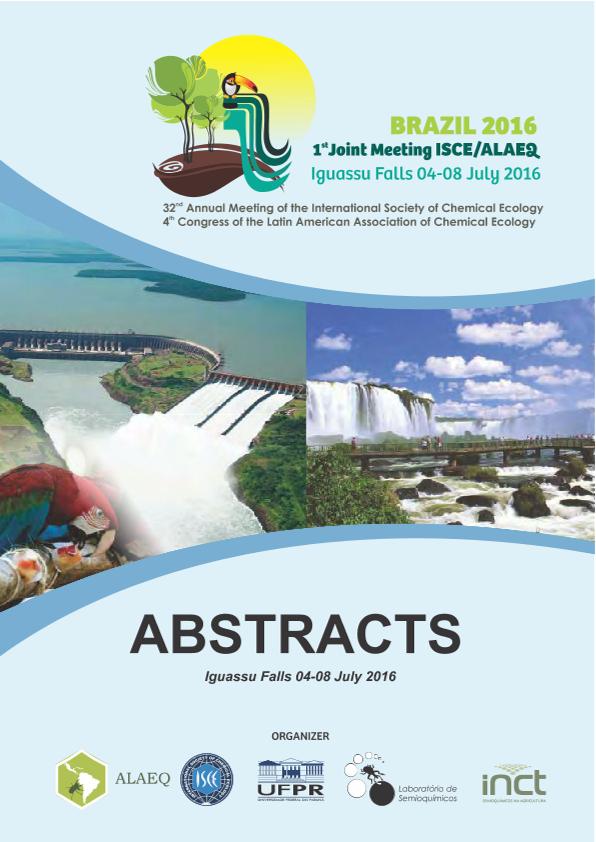Evento
Oviposition choices of the willow sawfly nematus oligospilus is affected by conspecific herbivory in the native willow salix humboldtiana.
Valladares, Gabriela Alejandra ; Braccini, Celina Laura; Alderete, Mariela del Carmen
; Braccini, Celina Laura; Alderete, Mariela del Carmen ; Coll Araoz, Maria Victoria
; Coll Araoz, Maria Victoria ; Vera, Teresa; Fernandez, Patricia Carina
; Vera, Teresa; Fernandez, Patricia Carina
 ; Braccini, Celina Laura; Alderete, Mariela del Carmen
; Braccini, Celina Laura; Alderete, Mariela del Carmen ; Coll Araoz, Maria Victoria
; Coll Araoz, Maria Victoria ; Vera, Teresa; Fernandez, Patricia Carina
; Vera, Teresa; Fernandez, Patricia Carina
Tipo del evento:
Reunión
Nombre del evento:
32nd Annual Meeting of the International Society of Chemical Ecology and 4th Congress of the Latin American Association of Chemical Ecology
Fecha del evento:
04/06/2016
Institución Organizadora:
Latin American Association of Chemical Ecology;
International Society of Chemical Ecology;
Título del Libro:
32nd Annual Meeting of the International Society of Chemical Ecology and 4th Congress of the Latin American Association of Chemical Ecology
Editorial:
Latin American Association of Chemical Ecology
Idioma:
Inglés
Clasificación temática:
Resumen
Most herbivorous insects start attacking a plant by laying eggs on it. Host plant selection can be crucial for the survival of the new insect generation, especially when larvae lack mobility to select their own feeding places. The willow sawfly, Nematus oligospilus (Förster), is an exotic emerging pest in Salix commercial forests and has been reported worldwide. Females of this species are parthenogenetic in the southern hemisphere and must find and recognize their host plant when they emerge as adults.The objective of the present work was to evaluate the effect of conspecific herbivory on the oviposition choices of N. oligospilus females. Local and systemic effect, were studied. First, choice tests were conducted on Salix humboldtiana (Willdenow) and S. babylonica (Linneaus) var. sacramenta in undamaged potted plants vs. plants after 48 hs. of larval feeding. Results on S. humboldtiana, suggests strong repellence to plants with damage as females highly preferred branches from undamaged plants for oviposition. This was observed for both, local and systemic damage. For S. babylonica we did not find significant differences between treatments.In order to look for the chemical cues associated to this behavior, plant volatiles are being analyzed. Preliminary observations showed qualitative differences between the chemical composition of damaged and undamaged plants, suggesting the presence of plant cues elicited by larval feeding as oviposition repellents.
Palabras clave:
OVIPOSITION CHOICES
,
CHEMICAL CUES
,
OVIPOSITION REPELLENTS
Archivos asociados
Licencia
Identificadores
Colecciones
Eventos(PROIMI)
Eventos de PLANTA PILOTO DE PROC.IND.MICROBIOLOGICOS (I)
Eventos de PLANTA PILOTO DE PROC.IND.MICROBIOLOGICOS (I)
Citación
Oviposition choices of the willow sawfly nematus oligospilus is affected by conspecific herbivory in the native willow salix humboldtiana.; 32nd Annual Meeting of the International Society of Chemical Ecology and 4th Congress of the Latin American Association of Chemical Ecology; Foz do Iguacu; Brasil; 2016; 1-2
Compartir



